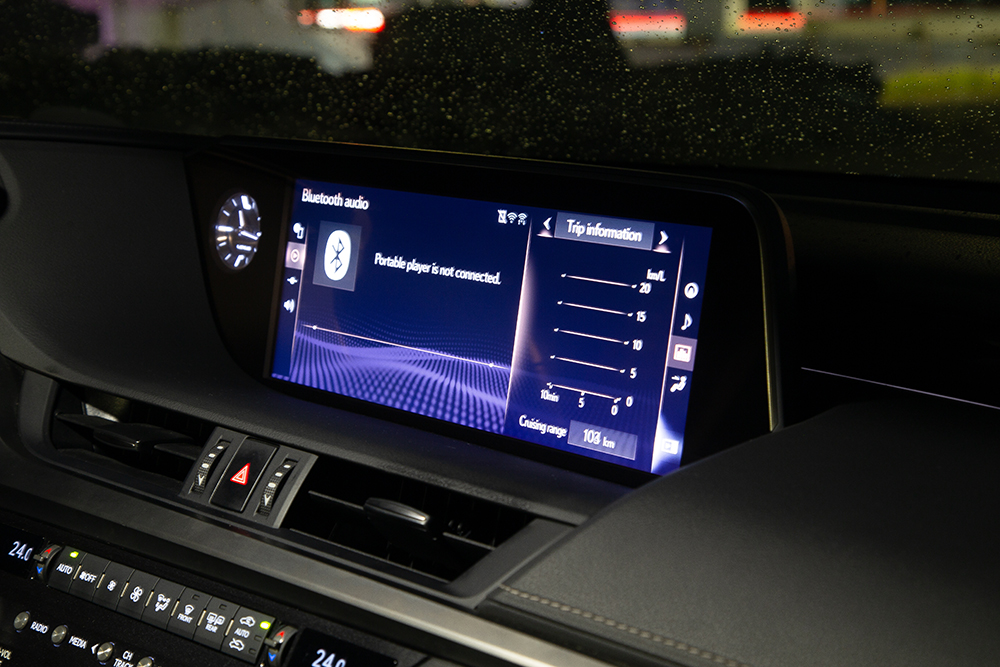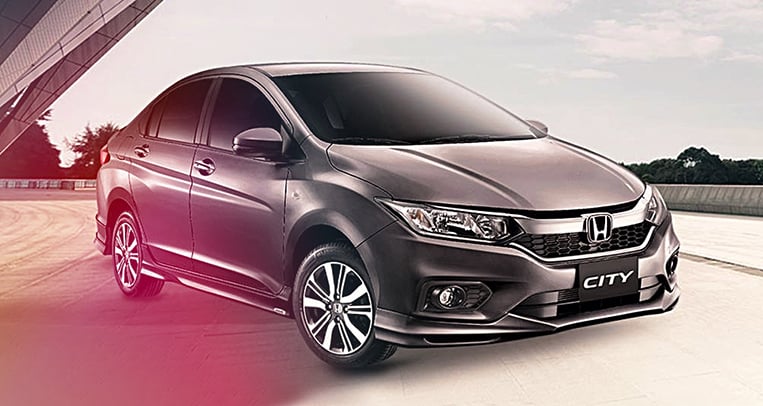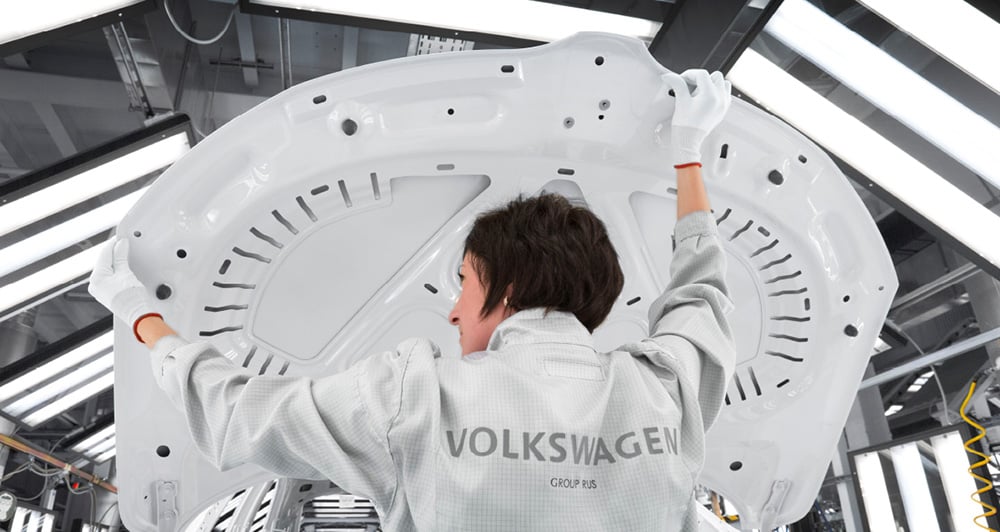
Midsize luxury sedans are typically very German things. The Mercedes-Benz E-Class and the BMW-5 Series are usually top-of-mind for most buyers. And Deutschland’s recipe for these cars has always been a big engine up front, space for five businessmen in the middle, and driven wheels at the back. Plus, a big boot to fit golf clubs in.
However, the Lexus ES is slightly different. Apart from being Japanese in origin, it’s also wrong-wheel-drive. Or front-wheel-drive, to be politically correct.


It looks very different, too. It’s a lot more subtle than its German counterparts both inside and out—not as flashy a symbol representing your successful medical practice, or the fat payout you got from last quarter’s profit share.
Sure, the gaping spindle grill could swallow a whale shark, but that’s the only thing that draws attention to this vehicle. Everything else flies under the radar.

But while the exterior looks like a ubiquitous hotel limo, the car’s sheer size gives it plenty of presence in the metal. With option creep and the unending pursuit of rear legroom, this midsize sedan is now as big as the original full-size LS400.
The aesthetic simplicity lends elegance to the ES’s stature, which I reckon will age beautifully in the years to come—something that can’t always be said of current offerings from Affalterbach and Munich.



Being this big also bodes well for passenger comfort. Every seat has much more space than you would find even in a large pickup-based SUV. Though you may sit closer to the floor than you would in an SUV, the ES is palatial by any measure.
Furthermore, the interior is a lavishly serene cocoon, albeit slightly dated on the aesthetic front due to the ES being one of the oldest models in Lexus’s lineup. Nonetheless, interacting with this automobile is a tactile pleasure.
Leather surfaces are supple and plush. Buttons and levers click and pull with heft. The turn signal stalk is a little rickety, but a demo unit shared by both Lexus clientele and media test drivers surely lives a harsher life than most, so we’ll give that a pass.

The steering wheel has just the right amount of girth in all the right places, and a medley of rich textures to satisfy your senses. It also happens to control one of the best electric power steering racks on a luxury car—beautifully weighted and striking a perfect balance between precision and comfort.
And despite being front-wheel-driven, torque steer is neither of any concern nor of consequence on the ES. There is some amount of veering off-line under power present, and it can sometimes have difficulty putting the power down through the front wheels, but you have to be trying very hard to make it happen.
Every control on this luxury barge is so finely tuned for comfort that it can smoothen a sloppy driver’s inputs. And even if it comes with a Sport mode, the chassis leans so far opposite of sporty that it really doesn’t matter. Unless an ES F is in the pipeline, the absence of rear-wheel drive is nothing to lament.

This particular variant is the ES350 Premier. And as the name implies, power comes from the 2GR-FKS—a 3.5-liter, naturally aspirated V6 making 298hp and 356Nm without the help of any electrical wizardry.
There is arguably no other engine currently in production as tried and true as the 2GR. It has been in high-mileage Camrys. It has pulled minivans such as the Toyota Sienna, the Alphard, and the Lexus LM. It has done time as a workhorse in the Tacoma pickup. It’s in the Lexus RC350 taking care of grand touring duties.
It has even had stints as the powertrain of sports cars. The Lotus Exige and Evora had 2GR engines, and so does the Emira to this day.

Drive a kilometer in any car with a 2GR and it’s easy to understand why this V6 is used liberally in a variety of applications. Like a gentle wave with the might of the ocean behind it, the 2GR delivers power with smoothness and strength.
There’s torque to be found anywhere in the rev range, and it will get going should you please. Fuel consumption during testing was 4.6km/L in the thick of the holiday rush—considerably decent for the 2GR all things considered.
Shifts from the eight-speed direct-shift automatic are seamless and snappy, although responses from the paddles are not as quick as expected.



This demo is still fitted with Lexus’s trackpad mated to a non-touch screen. But Lexus has since given up on said technology, so units delivered today will get the brand’s updated touchscreen infotainment system capable of phone integration via Apple CarPlay and Android Auto with a wireless charger in place of the touchpad.
The ES350 also comes with a laundry list of tech including adaptive cruise control, lane-keeping assist, blind-spot monitors, and many more. But the beauty of the tech onboard is that it disappears into the background, allowing both the driver and the passengers to immerse themselves in the tranquility of the ES.

I’ll be honest. I thought this would be a glorified Camry, and sure, the Camry comes through here and there. But for the most part, it manages to distinguish itself from its Toyota stablemate. The ES350 has a certain gravitas to it that commands far more respect.
What you have to understand is that the ES is designed around a specific philosophy—one that prioritizes comfort and understated luxury above all else. And that may sound drab to some, but the ES is an experience that makes sense of all its idiosyncrasies.
And in today’s luxury market, it’s something you won’t find anywhere else.
LEXUS ES350 PREMIER
| Engine | 3.5-liter naturally aspirated V6 gasoline |
| Transmission | 8-speed automatic |
| Power | 298hp @ 6,500-6,600rpm |
| Torque | 356Nm @ 4,600-4,700rpm |
| Dimensions | 4,975mm x 1,865mm x 1,445mm |
| Drive layout | FWD |
| Seating | 5 |
| Price | P4,878,000 |
| Upside | Delightfully old-school luxury experience. |
| Downside | One of Lexus’s older models; surely due for a refresh soon. |











Comments